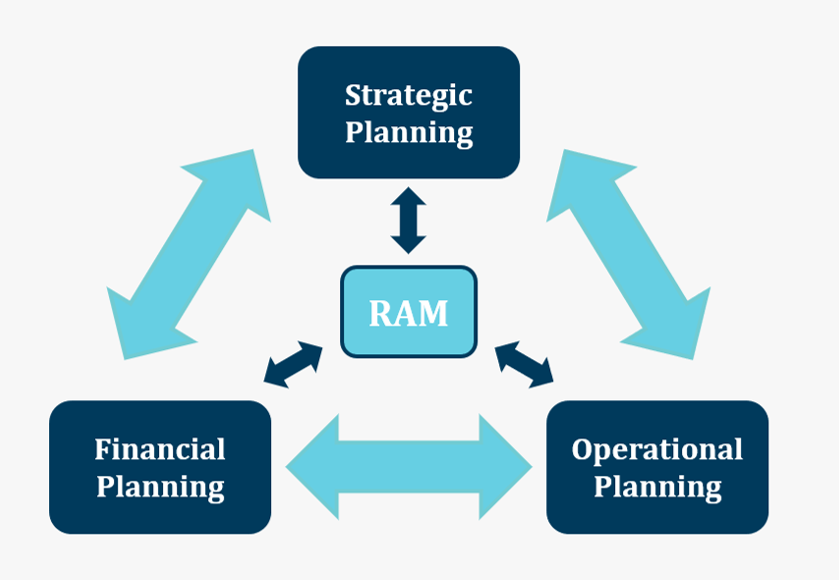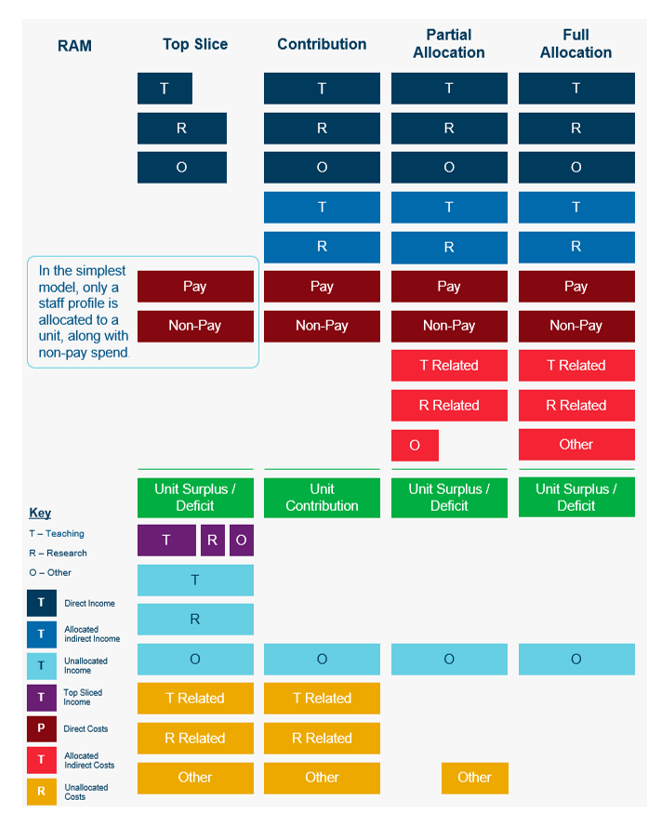
| Date | Author |
|---|---|
| 23rd November 2021 | Claire Taylor MBE |
The right resource allocation model (RAM) can provide the foundation for effective financial management within a university. However, the consequences of implementing the wrong model, or none at all are substantial. Universities with the wrong model are likely to have a poor decision-making process, have units that are unaligned with organisational structure, and won’t be allocating resources in the most effective way to achieve objectives. Here, SUMS Managing Consultant Claire Taylor MBE provides an overview of recent research SUMS has undertaken on RAMs and how universities need to structure their thinking to get the most from them.
The Right RAM is Key to the Right Result: Why is a RAM Important?
A RAM is an institution-wide mechanism by which a university attributes direct income and expenditure, allocates indirect income and expenditure, and sets financial performance targets for academic and non-academic organisation units. It sits at the heart of other organisational planning (see figure 1, below).
Figure 1. RAMs at the Heart of Organisational Planning
While a RAM cannot ensure financial sustainability, it is a useful tool to help achieve it. An effective RAM educates, enables and supports both the organisation and its constituent units. Used well, RAMs can help organisations understand the full cost of operation of academic units. They allow leaders to get an accurate picture of the cost-of-service delivery and can provide evidence to support strategic and operational decision-making.
With the right model, university leaders can:
- Enable effective, evidence-based decisions
- Enable increased awareness of the costs of services
- Measure and manage performance
- Understand drivers of financial sustainability.
SUMS has been working with several members, including the Universities of Surrey, Reading and Bristol over the past two years to explore the most effective RAMs and how they can support success. We have looked at the relationship between RAMs and operating models, organisational structures and accountability. On the back of this research, we published a briefing paper, available to SUMS members (contact me if you would like to see a copy!).
Through our research, we’ve outlined key principles associated with a successful RAM:
- Strategic alignment
- Clear and understandable
- Deployed to the right organisational level
- Deployed to an appropriate level of materiality
- Delivers appropriate institutional surplus
- Works towards unit financial sustainability
- Enables medium-term investment planning.
A Picture is Worth a Thousand Words: Visualising Resource Allocation Models
Every university has a RAM, you just might not call it that. Due to institutional inertia, it may have been in place for many years and the good reasons it was the right model then may not be applicable today. The choice often depends on leadership style and preference. There are broadly four types of resource allocation model in use in the UK higher education sector:
- The top slice or taxation model
- The contribution model
- The partial allocation model
- The full allocation model.
Below, we show how each of these models relates to a range of cost areas. Of course, there are as many varieties of each model as there are institutions – this is not an exhaustive list! Some partial allocation models will allocate as much operating expenditure as possible to revenue-generating units, while others will only allocate costs associated with specific strategic objectives, for example, space and utility costs. Even in full allocation models, other indirect income is rarely allocated to organisation units. Those wanting to know more about the benefits and drawbacks of the respective models can access the SUMS-Member-Only Briefing Paper.
Figure 2. The Four HE Sector RAMs
Getting the Most from Your RAM
When thinking about incremental improvements or more significant changes to a resource allocation model, universities should work through a consultation model. One possibility is to start with the broad – and perhaps philosophical – questions before getting into the detail about models, inclusions and exclusions. We recommend that universities start by asking the following:
- What RAM is right now? What might be right in the future?
- What level should the RAM be deployed at? For example, faculties, schools, departments, programmes or modules?
- What level of data is available?
- How is control currently devolved through the university?
- How many times is the RAM run? When planning numbers, responding to actual numbers, or reviewing year-end performance?
- How do you deal with in-year changes?
- What happens to a surplus at organisation-unit level? For example, is it retained, split or absorbed?
- Where does any contingency sit?
The resource allocation model should be seen as one tool within the landscape of strategic planning, financial planning and operational planning. It should:
- Reflect the strategic objectives of the organisation
- Reflect the operating context of the organisation
- Align with the structure of accountability within the organisation, both in terms of the level to which it is run and the spans of control and influence of budget holders
- Reflect its underlying purpose, be that to inform budget-setting and annual financial planning or to be used to inform investment decisions and long-term planning.
RAMs can reward good corporate performance, but this must be balanced to focus on incentivising good behaviours while minimising unintended consequences.
Universities are not conglomerates, but they are businesses. In most large institutions, a culture exists in which a level of cross-subsidisation of discipline areas is expected, albeit this is not necessarily transparent. A RAM which allows the institution to understand the full cost of operation and service delivery can help decision making and support a financially sustainable university well-placed to deliver quality education to its students in the long term. However, leaders must take care to see financial performance measured using the model as only one measure of performance. Based on our work with universities, we recommend academic unit performance across various institutional strategic objectives is presented all together as in a balanced score card approach.
If you are considering changes to your operating model or resource allocation model and would like some insights from our work in this area, please do get in contact with Claire Taylor MBE, Managing Consultant (s.c.taylor@reading.ac.uk).










